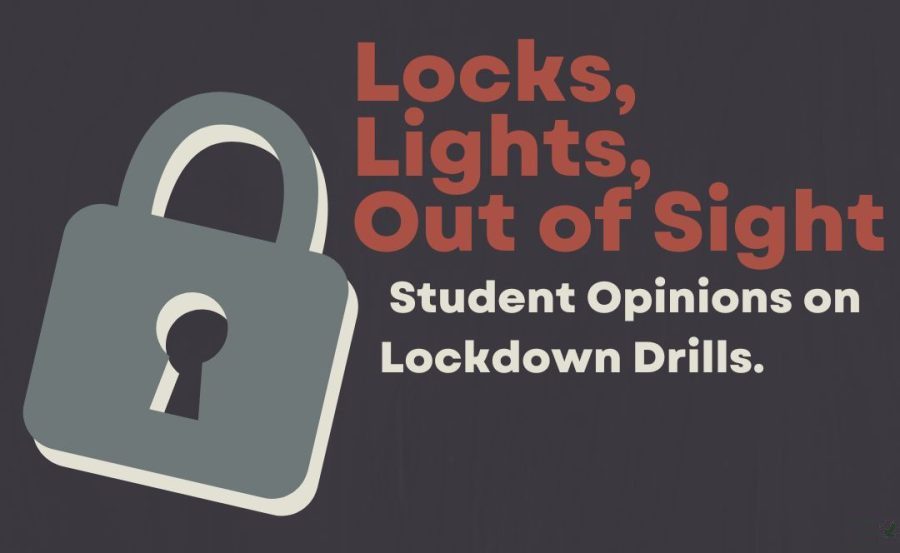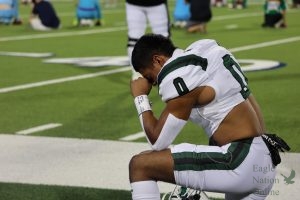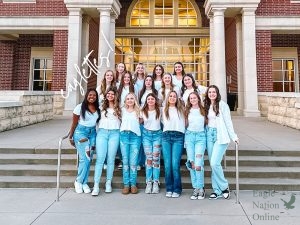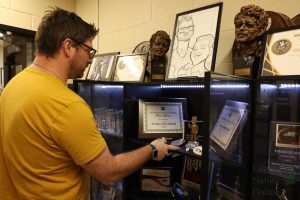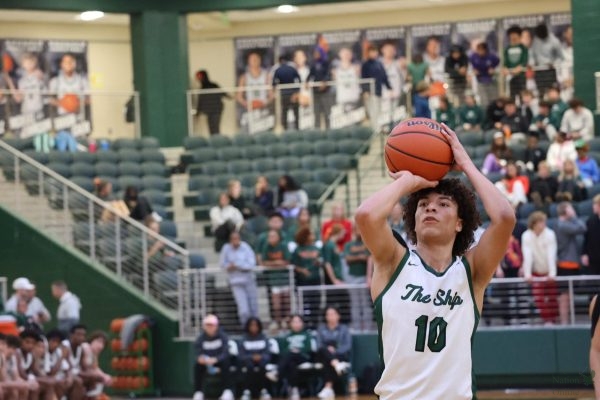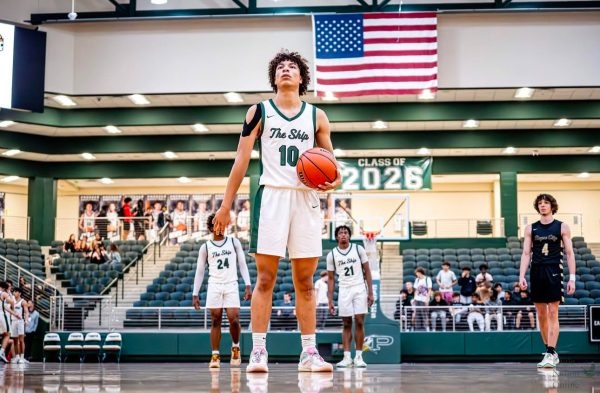Analysis: The usefulness of lockdown drills
Writer discusses poll results, student opinions on lockdown drills
The graphic above reads “Locks, Lights, Out of Sight”, which is what is played on the loudspeaker to inform people of a lock down drill. The article presents students’ opinions on the drill, and if changes should be made. Freshman Kiera Payne, who reported she thought lockdown drills did not need to change, said “nothing can prepare you for the panic and terror of a real lockdown.” Graphic courtesy of Canva.
September 14, 2022
As the loudspeaker blasts: “Locks, Lights, Out of Sight,” students take cover. Students know this phrase, as it always plays when the school goes into a lockdown drill.
The administration held its first drill of the year Aug. 23 during the advisory period. These drills involve turning off all lights, locking the doors, covering windows and students hiding in the corners of rooms. Just before the end of the school day Sept. 14, another lockdown drill occurred, with no announcement. The button was pressed on accident, meaning the administration did not plan a drill. Students and teachers did follow the procedures of the drill, but due to the fact that there was no announcement, some students speculated that the lockdown was real.
Many students, parents and staff members fear the idea of a person coming into a school with the intention of harming others. With the goal of being prepared for a situation like this, lockdown drills are in place.
These drills are a part of the school experience to help both students and staff know what to do if an intruder came into the building, but it’s unclear just how many people think they would follow these procedures in a real situation.
In a survey of 20 students asking if they would follow the procedures of a drill in a real lockdown situation, 65% of students answered they would, while 35% answered they would not.
“(Lockdown drills) let you know what you should do in case of an emergency,” freshman Brooklyn Didonato said. “I think everyone should pretend that these drills are real because if we did have an intruder in the school then people would actually know to be quiet.”
Holding a more serious approach toward the drills helps the goal of knowing what to do in an actual situation become more attainable. The use of phones or talking is prohibited during a drill in order to replicate the needed silence in a real setting.
While the majority of students indicated they would follow the same procedure as a drill, several reported they would act differently.
“(I would) run out the building and go far away from the school,” senior Samith Huynh said. “However, if everyone had the same idea to run out of the building, the intruder would have many targets.”
The survey additionally asked if students thought lockdown drills should be changed. Only 20% of students responded in favor of a change, while 80% responded in favor of no change occurring.
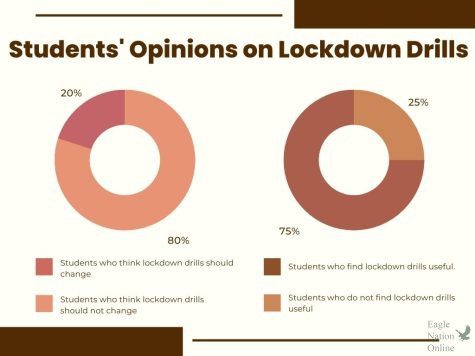
Freshman Kiera Payne, who responded in favor of no change, said “nothing can prepare you for the panic and terror of a real lockdown.”
A majority of students who answered “no” agreed with Payne, having similar reasoning for their response. Many of the students reasoned that lockdown drills do not need to change because no drill will be able to really replicate what happens.
In the final question of the survey, asking students for their opinion on the usefulness of lockdown drills, 75% students indicated that they do view the drills as useful. Several students acknowledge the usefulness of lockdown drills but do feel minor changes are necessary.
“I think lockdown drills are a good system to prepare in case of emergency,” senior Trinity Hare said. “but I do think that there shouldn’t be announcements of when the drills are going to happen, so it reflects a real situation more accurately.”
When ENO staff sent out the survey, the anticipated results differed from the final results. The final results of the survey disproved the prediction. The data collected proves students value the fact that lockdown drills are in place.
Lockdown drills are highly valued at the high school, as shown in the survey, and it is important that students follow the procedures, whether the drill is known to be “real” or not.
Article updated Sept. 15 to move current information higher.


